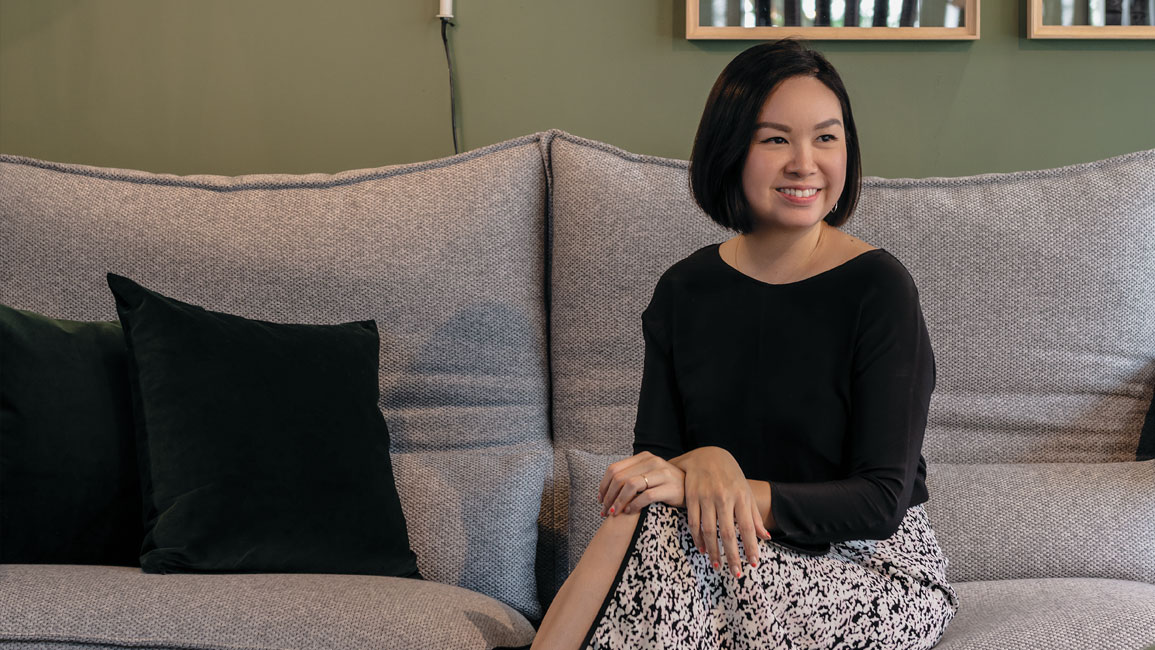
What is your design philosophy?
To challenge and explore, because I feel that it is not always black and white or definite. An idea, a material or even an installation detail can always be challenged and seen from different perspectives; and design helps make things limitless.
Why did you join Foreign Policy Design Group (FP)?
The boundaries between the different creative disciplines – graphic design, interior design, industrial design etc. – are blurring, and studios are being more multi-disciplinary. FP is one of the leading branding studios and it was only natural that a full brand experience spreads from graphics to the spatial. At the same time, before I joined them in 2015, I could feel quite a divide when I did projects that worked independently from the brand consultant, where the space just didn’t quite gel with the brand. I guess FP and I aligned, and with a little bit of perfect timing, I joined as a partner to help build this spatial arm of the company.
Where do you draw your inspiration from to create your designs?
I draw inspiration from emotions and imagine how the user/visitor would feel in the space. How this is expressed is by playing with tactility of materials and lighting. My team and I had the opportunity to design a natural wines restaurant, Le Bon Funk, which opened in 2018. We were motivated by the name “funk” (a wine term and to me, a symbol of the unexpected) and tied it with our context of the tropics. In doing so, we married materials found in our climatic zone, such as rattan and terracotta, and paired them with materials and colours that evoke the funk i.e. deep purples and vinyl yellows. This gives the feeling of familiarity and yet, something different, all at the same time.
What is the most interesting project you have worked on to date?
It is hard to choose that one most interesting project, but if I had to, it would be Gallery & Co., a multi-concept retail store in the National Gallery Singapore. The nature of the project was complex as it has a full F&B component, along with a retail space that carried very varied products from books and stationery, to kids’ fashion and toys. FP did the full brand experience and the spatial design was an extension of the brand narrative, characterised by graphics with geometric shapes and primary colours. Though we had an overall branded spatial language, we also carved out pockets of experiences that fit the different products – the den-like kids’ section under a staircase was of course the most fun to design – and it was quite an enjoyable challenge to strike a good balance.
Which designers and architects inspire you?
Geoffrey Bawa and Luis Barragan would probably be one of the top few – Bawa as a reminder of the Asian vernacular and textures; Barragan for his very visual and emotive architecture. His use of colours inspires and also serves as a reminder to not be afraid of using them.
Why do you enjoy purchasing pieces from Space Furniture?
Space offers a wide range of furniture that fits any design, look and feel. Though there may be ranges that are on the pricier side, we still manage to find pieces that not only fit our design intent, but more importantly, our project budget. One example is the Emeco bar stool we used for the restaurant The Daily Cut. It is both utilitarian and hardy, which suited our purpose.
The LC4 from Cassina, retailed at Space Furniture, has a special place in your heart. Why?
The chaise longue Le Corbusier designed with Cassina brings back a childhood memory for me. I remember a neighbour owned one and I would go over and play on it, treating it as a slide. It was a big playground for me. I had no idea of its significance then, as I was still in primary school. I’d be appalled if my kids did the same thing today.
This story is produced in collaboration with Space Furniture. It first appeared in the February/March 2019 issue of d+a.


 Share
Share









